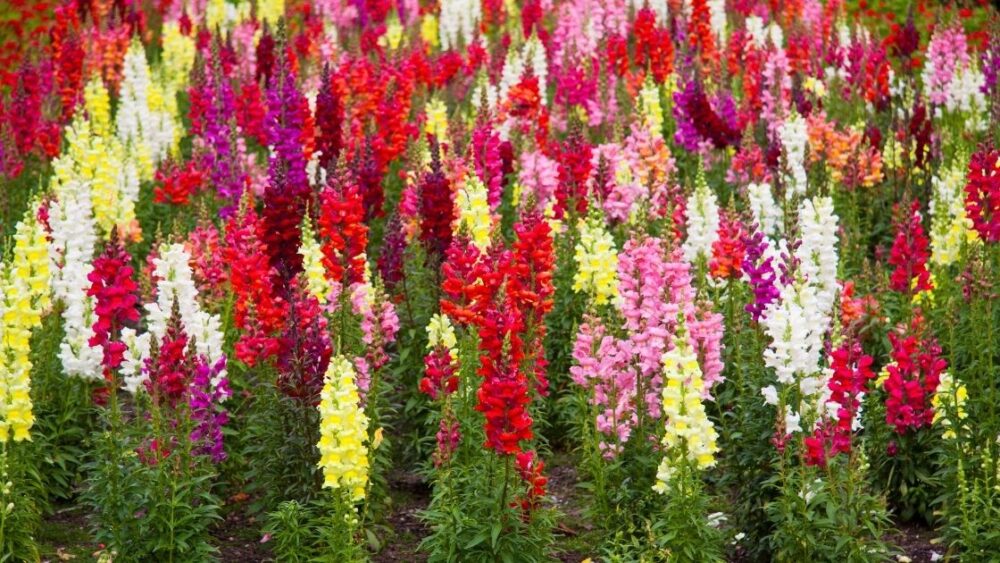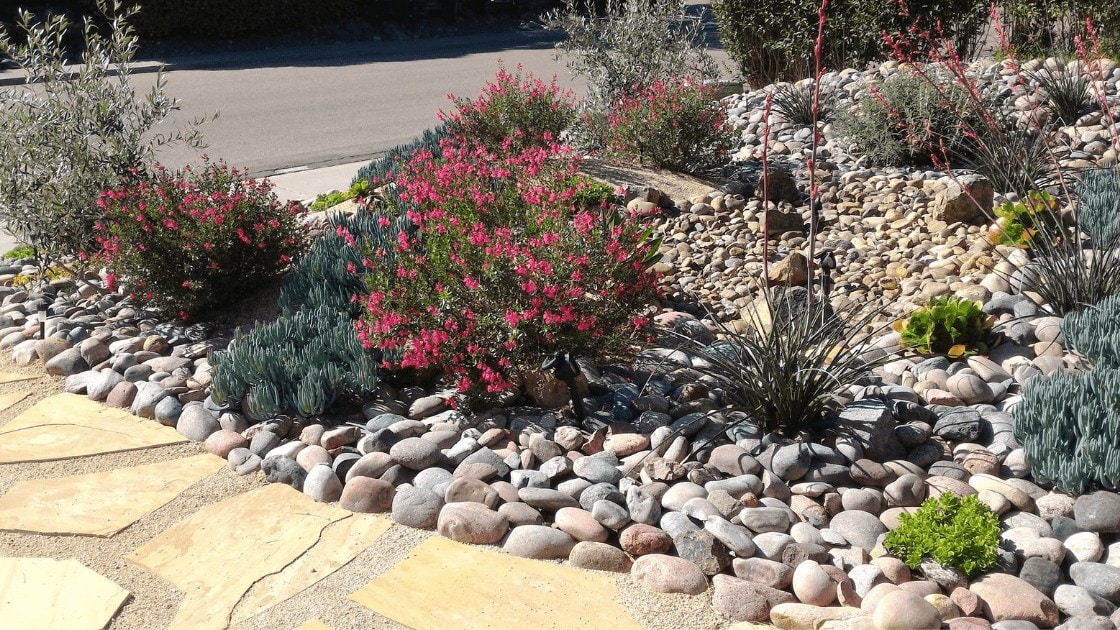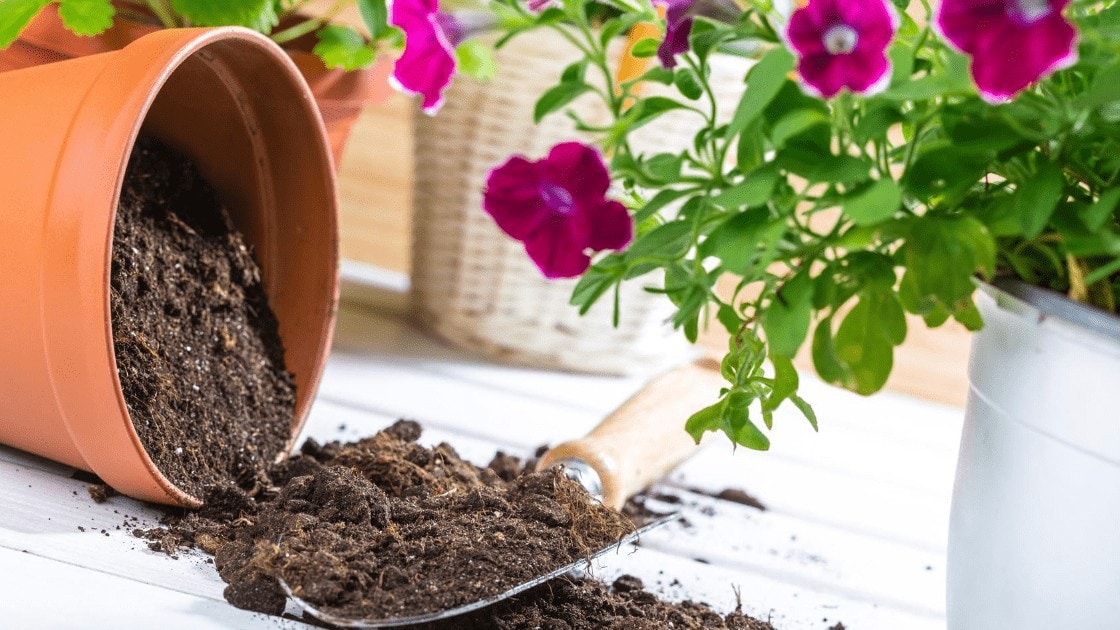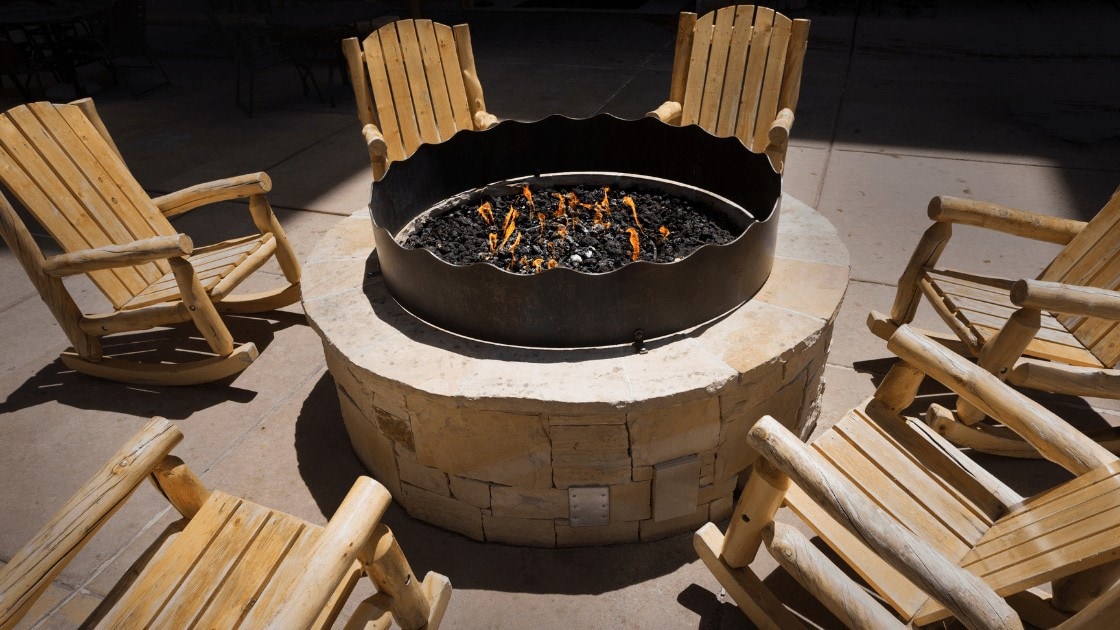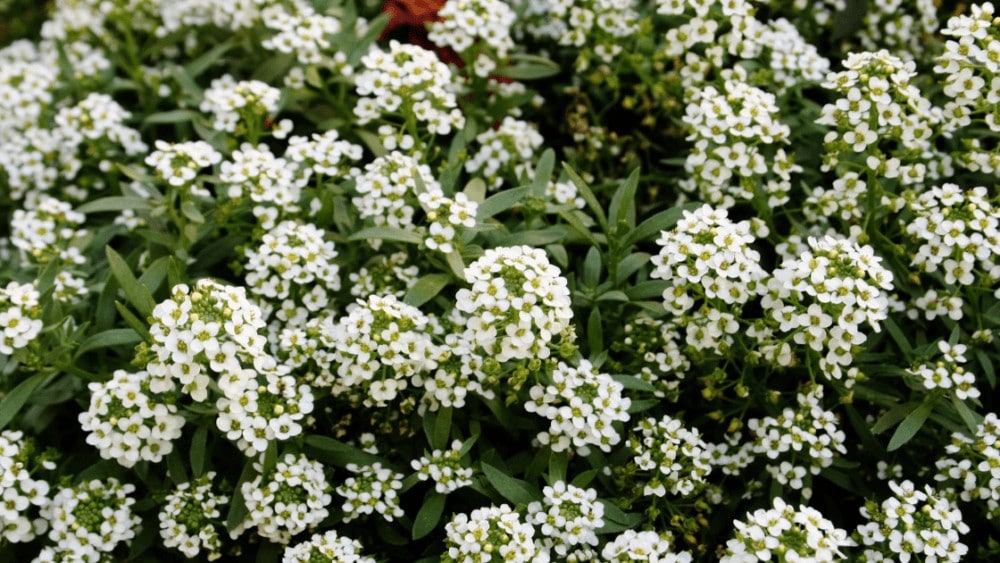
Although sweet alyssums can be killed by unfavorable conditions, improper watering, heat stress and other basic factors, they are also most commonly grown as an annual plant. Even if you shelter them well from the summer heat and the winter frost, the plant will not live for many years and often will wilt and die in just one. Plants older than one year may have trouble flowering and their roots may succumb to various pathogens that cause rot.
Sweet alyssum (Lobularia maritima) is a very common ornamental garden plant that produces a huge number of tiny white or purple flowers during the spring, summer and autumn. It’s in the same plant family (Brassicaceae) as broccoli and cabbage and its leaves are somewhat edible (although it’s not recommended that you eat them, because the plant can be confused with other species). Just like most other herbaceous perennial ornamental plants, it spreads quickly, self-seeds easily and requires some trimming and shaping to prevent uneven, sporadic overgrowth.
4 Unfavorable Causes That Make Sweet Alyssums Wilt and Die
If your sweet alyssum starts wilting and dying shortly after being planted, the problem can be diagnosed and fixed. Usually, it comes down to insufficient watering or heat stress. Let’s take a look at the most common causes of wilting and learn how we can deal with them:
Browse our Affiliate Products
1) Heat Stress – Sweet alyssums don’t do well in the high heat. In dry and tropical climates, they will often look sick and wilted all throughout the summer, only to come back in the autumn and start flowering again. There is little you can do to remedy this, apart from providing some shading and the occasional misting. Often, any remaining flowers on the plant will fall off as soon as summer arrives.
2) Root suffocation – Although sweet alyssums are relatively tolerant to over-watering, they can still suffer if they are watered too frequently for too long and their soil is too compacted. Eventually, root rot may set in, which often spells death for the plant. It’s impractical to uproot a whole sweet alyssum garden, clean up its roots and change the soil, so the best thing to do is to just cut back the plants a bit, provide some shading and hope that they recover on their own.
3) Transplant shock – If you’ve purchased small sweet alyssum plants from a nursery, or you started them from seed indoors, wilting can be very common after planting them outdoors. This is why it’s recommended that transplanting is done only in late evening and the plants are abundantly watered afterwards. The only solution to transplant shock is to provide a full shade and/or some misting. The plants usually recover quickly in a matter of 2-3 days, during which time they re-grow the tiny root hairs that have been damaged.
4) Old age and other mysterious causes – Sometimes, the problem can’t be diagnosed accurately and remains a mystery. There are several pathogens (like root maggots) that can attack the roots of sweet alyssum plants and other plants in the Brassicaceae family. Other times, the plants may be stressed by too extreme temperature drops in the early morning.
Either way, wilting is always a sign that the plant has trouble transporting enough water to its leaves. The best way to help it recover is to reduce the heat stress, provide shading and misting or cut it back a little. Often, the problem will resolve on its own. This plant can die of old age in just one year, depending on the genetics. The symptoms of death from old age can be difficult to distinguish from those of a fungal disease or heat stress.
What Other Problems Are Common in Sweet Alyssums?
Because sweet alyssums are short-lived, most problems they experience don’t need to be fixed – in the autumn, the plants will die regardless and will self-seed very efficiently for the following year.
Most problems in sweet alyssums are the same ones affecting all other plants in the family (Brassicaceae) – those are mainly rotting issues, like Powdery mildew, Downy mildew, Blackleg, Clubroot and many others. Most of those develop because of high humidity and the stalks of the plants remaining too wet for too long after watering.
This can be avoided by watering more carefully, not too frequently and taking into account the weather conditions – in sunny, windy weather, the remaining water on the stalks quickly evaporates, greatly reducing the chance of any fungal pathogens setting in.
What Are the Optimum Growing Conditions of Sweet Alyssums?

Sweet alyssums are plants of Mediterranean origin and they don’t require much care or attention. However, forgetting to water them in hot weather can quickly lead to wilting and even death.
How much sunlight do they need?
The more sun you can give the plant, the better it will bloom. Flowering is an energy-intensive process and plants growing in full shade will produce a lot less flowers. However, the full sun leads to high water losses and wilting can occur. Because of that, partial shade may be better – it avoids too much heat stress, while still providing the plant with enough light. The absolute ideal scenario is 2-4 hours of direct sun, followed by partial shade for the rest of the day.
What temperature do they grow best at?
During the hot summer, this plant may appear dormant and not grow much. This is somewhat variety-dependent. Nursery plants planted in a very hot, sunny location may not be able to deal with the sudden heat and may wilt severely. The plant acclimatizes quickly to hotter temperatures through gradual exposure, sometimes in less than a week, but may still not flower if the temperature is too high. Sweet alyssum can survive winter and grow back the next year, but it’s best to re-start it from seed, because plants older than one year may not be as vigorous.
What type of soil is required?
Sweet alyssum can grow in almost any type of soil and doesn’t care much about soil acidity or alkalinity. It can grow in very compacted, clay soils, although not as well as it will in a proper, well-draining soil mix.
In the wild, this plant can even be found growing in coastal zones with very high soil salinity. You can plant alyssums directly in your garden and they will grow regardless of the soil quality, but for best results and prolific flowering, a garden bed with fresh, nutritious and well-draining soil will work best. Regular fertilization with dilute fertilizer is recommended if the soil is not fresh. For more on soils, check out our article, The Best Soil for All Types of Gardens
Ideal watering frequency
Although alyssums are tolerant to overwatering and to lack of air in their root zone, it’s still best to water as rarely as possible to prevent problems with the roots. Too frequent watering can also lead to various rotting problems in the lower stems. Waiting for the plants to start wilting a bit before you water will give you a good idea of the ideal watering frequency for your particular climate and soil.
Planting in a garden bed vs. in pots
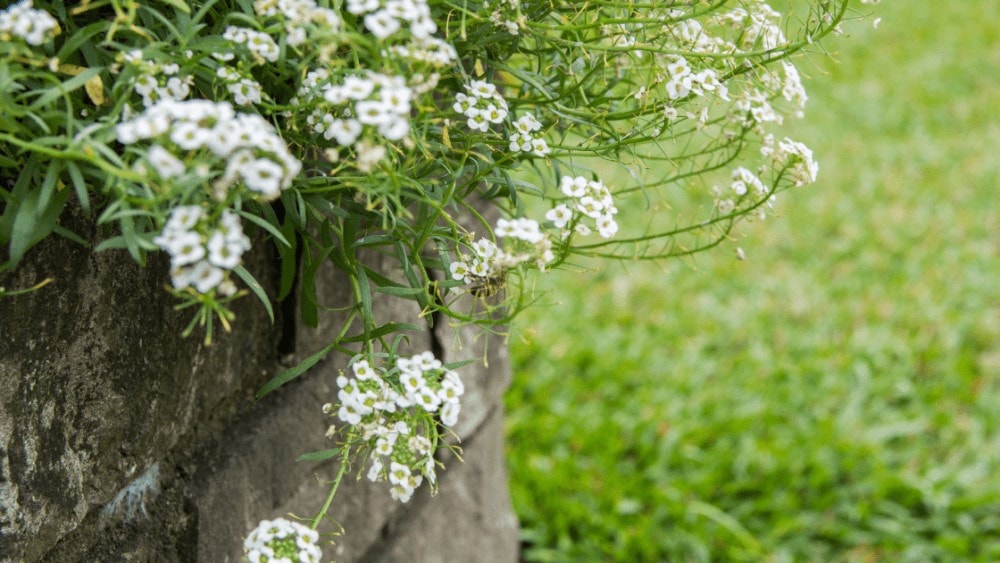
Alyssums can grow well both in pots and in garden beds and this mainly comes down to visual preferences and aesthetics. Many gardeners choose to plant sweet alyssums together with other colorful plants in raised garden beds. Because this is a very low-growing plant, reaching a maximum height of around 7 inches, it’s best to plant it around the edges of the garden bed, with taller plants planted towards the middle.
When should pots be moved back indoors?
Sweet alyssum is usually grown as an annual. In temperate climates, it will start flowering and producing seeds in the summer. In dry and tropical climate this will happen in spring and autumn and the plant will be somewhat inactive during the hottest summer months.
Those aren’t strict rules and the actual flowering behavior may be variety-dependent. Keeping this in mind, it’s best to just collect seeds and start new plants as the winter ends. If you’re growing the plant in garden beds, it will usually self-sow after being pollinated by insects or by the wind. For more information on pots, check out this article, What is the perfect pot for my plants?
My Sweet Alyssums Are Dying! What Should I Do?
Most likely, your alyssums are stressed by heat or there is a problem or disease in the root zone. Provide the plants with a full shade (they should still receive plenty of indirect light) and observe if the wilting disappears. If there is no change at all, try lightly misting.
If nothing is making any difference, there’s probably nothing you can do to save your plants and they have fallen prey to a root disease. If the plants start recovering however, keep them shaded and slowly re-expose them to the full sun, while providing frequent misting. Full recovery may take up to a week.
Do Sweet Alyssums Deal Well With Unfavorable Growing Conditions And How Can You Compensate for Them?
Alyssums are quite resilient and the only unfavorable environmental conditions that can permanently damage them are diseases, sub-freezing temperatures and long periods of severe drought combined with heat stress.
What Different Varieties Are There and Are They Prone to the Same Problems?
There are more than a dozen varieties of sweet alyssum, most of them having either purple or white flowers. ‘Easter Bonnet’ is the most popular purple variety and ‘Carpet of Snow’ the most common white variety.
All varieties have similar care requirements, but their flowering behavior might differ. Some varieties are very early-blooming and others like to bloom during the summer. This information is usually written on seed packets or given out by the nursery that sells the plants.
However, the flowering behavior of the plant can still be influenced by your particular climate and very hot temperatures may prevent flowering, regardless of the variety. All varieties are prone to the same fungal pathogens, so make sure that the stalks don’t remain wet for too long.
There are other species of alyssums, which are completely different from the sweet alyssum. Yellow alyssum (Alyssum alyssoides) for example is in a completely different plant family and is a long-living, perennial plant.
Final Thoughts
Sweet alyssum can wilt because of too much heat stress or lack of water. Unlike many other plants, root suffocation that comes from overwatering is more unlikely to be the cause of wilting. However, overwatering can still lead to a variety of fungal problems.
The best way to attempt to revive dying alyssum plants is to reduce their water demand temporarily until they recover. This can be done by shading, misting or in severe cases – trimming and cutting back. During hot summers, some wilting can be normal – the plant will bounce back during autumn and will start flowering again.








